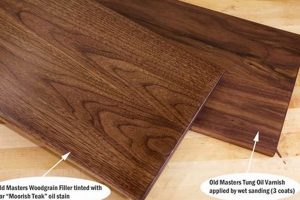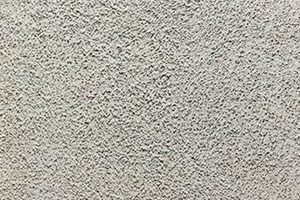The term describes a treatment applied to brass objects to replicate the appearance of aged or antique brass. This finish typically involves darkening or oxidizing the surface of the brass to create a muted, warmer tone with subtle variations in color. For example, a newly manufactured lamp might be treated to resemble a lamp that has aged naturally over decades.
This aesthetic choice offers several advantages. It allows for the introduction of a classic, established look into contemporary designs without the challenges associated with sourcing and maintaining genuine antique pieces. This finish imparts a sense of history and character, often associated with quality and enduring style. Historically, brass was a common material in home dcor and functional objects, reflecting its durability and aesthetic appeal; replicating its aged appearance allows designers to tap into this historical resonance.
Understanding the nuances of this specialized coating is crucial when selecting hardware, lighting fixtures, or decorative elements for interior design projects. The following sections will delve into specific applications and considerations when working with this particular surface treatment.
Working with Aged Brass Treatments
This section provides essential guidance on integrating aged brass surface treatments into various design and restoration projects. These guidelines ensure optimal results and long-term preservation of the aesthetic qualities.
Tip 1: Consider the Base Material: The underlying metal composition significantly impacts the final appearance. Ensure the base material is genuinely brass or a brass alloy to achieve authentic visual characteristics. Coatings applied to other metals may yield unsatisfactory results.
Tip 2: Evaluate Existing Finishes: Before applying a fresh coating, carefully assess any pre-existing treatments. Removal of old finishes is often necessary to ensure proper adhesion and prevent undesirable chemical reactions. Employ appropriate stripping agents and neutralizing processes.
Tip 3: Select Appropriate Cleaning Agents: Standard cleaning products may damage the surface of aged brass. Use only pH-neutral cleaners specifically formulated for brass or delicate metal finishes. Abrasive cleaners are strictly prohibited.
Tip 4: Control the Oxidation Process: When artificially aging brass, carefully monitor the oxidation process. Premature or uncontrolled oxidation can lead to uneven color distribution or excessive darkening. Test the process on a small, inconspicuous area first.
Tip 5: Apply Protective Coatings: Following the aging process, apply a clear protective coating to prevent further oxidation or tarnishing. This coating will also safeguard against scratches and environmental damage. Choose a coating that is compatible with the underlying brass and intended for interior or exterior use, as applicable.
Tip 6: Consider the Lighting Conditions: The appearance can vary depending on the lighting. Always view the material under the intended lighting conditions to ensure the color and texture are suitable for the application.
Tip 7: Regular Dusting: Routine dusting with a soft, dry cloth helps prevent the accumulation of dirt and debris, which can accelerate tarnishing or discoloration. Avoid using damp cloths unless necessary, and always dry the surface immediately.
Adhering to these guidelines will help maintain the integrity and beauty of items treated with aged brass finishing, ensuring their longevity and continued aesthetic appeal. Proper selection, application, and maintenance are paramount.
This concludes the practical guidance on working with this distinct surface treatment. The following sections will address specific use cases.
1. Authenticity of Base Metal
The authenticity of the base metal is a foundational element in achieving a convincing and durable coating that replicates the look of aged brass. Without a genuine brass or brass alloy substrate, the applied treatment will invariably lack the depth, character, and long-term aging properties inherent to the intended aesthetic.
- Alloy Composition and Reaction to Aging
The specific alloy composition of the brass directly influences how it reacts to artificial aging processes. Different brass alloys (e.g., those with higher copper content versus higher zinc content) will oxidize and develop patina at varying rates and with distinct colorations. A base metal lacking the necessary copper content will not achieve the desired warm, muted tones characteristic of vintage brass.
- Adhesion and Durability of Finish
The compatibility between the base metal and the applied coating is crucial for adhesion and long-term durability. A genuine brass substrate provides an ideal surface for the applied treatment to bond with. Using other metals can lead to poor adhesion, premature peeling, or an unnatural-looking finish that lacks the depth and richness of true aged brass.
- Visual Depth and Patina Development
The underlying metal contributes to the visual depth and the potential for natural patina development over time. True brass, even when treated, will continue to subtly age and evolve in appearance. Non-brass base metals coated with a simulated aged brass finish will remain static, lacking the dynamic quality of genuine materials and potentially appearing artificial upon closer inspection. Consider, for example, the difference between a solid brass doorknob that has been aged and a steel doorknob painted to look like aged brass; the former will show variations in color and texture that the latter cannot replicate.
- Market Value and Perceived Quality
The authenticity of the base metal significantly impacts the perceived quality and market value of the finished product. Items constructed from genuine brass, even with an aged finish, are typically viewed as more valuable and desirable than those using non-brass materials. This difference reflects the material’s inherent qualities, durability, and the historical association of brass with quality craftsmanship.
In summary, the authenticity of the base metal is not merely a superficial consideration but a critical determinant of the success and longevity of a treatment designed to replicate aged brass. It affects the alloy’s response to aging, the adherence and durability of the finish, the potential for natural patina development, and ultimately, the perceived quality and value of the finished object.
2. Protection against corrosion
Protection against corrosion is a critical consideration when dealing with objects featuring an coating designed to replicate aged brass. While this aesthetic evokes a sense of history and timelessness, the underlying brass or brass alloy remains susceptible to environmental factors that can accelerate deterioration. Therefore, proactive corrosion prevention measures are essential for maintaining the integrity and appearance of such surfaces.
- Barrier Coatings and Their Role
Clear, protective coatings serve as a primary defense against corrosion. These coatings, typically composed of lacquers, polymers, or waxes, create a physical barrier between the brass surface and corrosive elements such as moisture, pollutants, and salts. For instance, a thin layer of lacquer applied to a aged brass faucet fixture will prevent oxidation and tarnishing caused by exposure to water and humidity, preserving the intended finish. The choice of coating should consider both its protective capabilities and its impact on the overall appearance, ensuring it does not detract from the desired aesthetic.
- Environmental Factors and Corrosion Rates
The environment to which an object is exposed significantly influences corrosion rates. Coastal regions with high salt concentrations, humid climates, and areas with industrial pollution pose greater challenges to brass preservation. An aged brass candlestick displayed in a seaside home will require more frequent and thorough cleaning and protection than one kept in a dry, climate-controlled interior. Understanding these environmental factors allows for the implementation of tailored preventative measures.
- Cleaning Protocols and Corrosion Prevention
Appropriate cleaning protocols are integral to corrosion prevention. Harsh cleaning agents and abrasive materials can damage both the aged brass finish and any protective coatings, exposing the underlying metal to corrosive elements. pH-neutral cleaners specifically formulated for brass or delicate metal finishes should be used. For example, gently wiping an coating brass lamp with a soft cloth and a specialized cleaner will remove dust and grime without compromising its protective layer. Regular cleaning helps prevent the buildup of corrosive substances on the surface.
- Material Selection and Alloy Composition
The alloy composition of the brass itself can influence its resistance to corrosion. Certain brass alloys, such as those with a higher copper content or the addition of corrosion-inhibiting elements, exhibit greater inherent resistance to degradation. When specifying an product with a aged brass finish, inquiring about the alloy composition can provide insights into its long-term durability. Opting for a more corrosion-resistant alloy will reduce the reliance on external protective measures.
In conclusion, effective corrosion protection is paramount for ensuring the longevity and aesthetic appeal of objects featuring a aged brass finish. The implementation of barrier coatings, consideration of environmental factors, adherence to appropriate cleaning protocols, and informed material selection are all critical components of a comprehensive strategy. By addressing these facets, it is possible to preserve the desired vintage aesthetic while safeguarding against the detrimental effects of corrosion.
3. Consistency of application
The aesthetic quality and perceived value of an item bearing a coat replicating aged brass are intrinsically linked to the uniformity of its application. Inconsistent application manifests as variations in color, texture, and sheen, detracting from the intended illusion of natural aging. The desired effect, a subtle and nuanced patina developed over time, is compromised when some areas appear overly dark or artificially bright due to uneven treatment. For example, a set of cabinet pulls with an inconsistent finish will appear disjointed and detract from the overall cohesiveness of the cabinetry design.
Several factors contribute to the challenge of achieving consistent application. These include variations in surface preparation, imprecise control of chemical processes used to induce oxidation, and differing application techniques employed by individual artisans or automated systems. Variations in metal composition or the presence of pre-existing coatings can also influence the outcome. A practical illustration is found in architectural hardware production, where large batches of door handles or hinges must exhibit a uniform finish to maintain the integrity of the design aesthetic across an entire building. Mismatched finishes on these elements would undermine the intended visual harmony.
Therefore, rigorous quality control measures are essential to ensure uniformity. These measures include standardized surface preparation protocols, precise monitoring of chemical treatment parameters, and regular inspection of finished items under controlled lighting conditions. Furthermore, the selection of experienced technicians and the implementation of robust training programs are crucial for minimizing variations in application technique. The pursuit of consistency, while challenging, is paramount to achieving a convincing and aesthetically pleasing aged brass aesthetic that enhances the value and appeal of the finished product.
4. Achieving desired patina
The essence of a surface treated to replicate aged brass lies in the successful attainment of a specific patina. The patina, a surface layer resulting from oxidation and other chemical processes, is not merely a discoloration but a carefully cultivated aesthetic element. It dictates the perceived age, authenticity, and overall visual character of the piece. Without the desired patina, the treatment is simply a colored coating, lacking the depth and nuanced variations inherent in genuine aged brass. The intended effect relies on replicating the subtle gradations and tonal shifts that occur naturally over decades of exposure to environmental factors. For example, a newly manufactured chandelier treated without proper consideration for patina development will appear contrived and unconvincing, regardless of the quality of the underlying materials.
The process of achieving the desired patina involves a complex interplay of chemical treatments, environmental controls, and artistic skill. Various techniques, such as applying oxidizing agents, controlled heating, and abrasive treatments, are employed to induce specific surface changes. Each technique yields different results, and the optimal approach depends on the specific alloy composition, desired level of aging, and intended use of the item. Furniture makers who specialize in recreating antique styles often use multi-stage processes involving carefully controlled acid washes followed by hand-applied waxes to achieve the desired patina. This level of precision ensures that each piece authentically captures the look and feel of a historical artifact.
Ultimately, the ability to consistently achieve the desired patina is the defining factor that separates a convincing replication of aged brass from a superficial imitation. The complexities of the patina-generation process necessitate a deep understanding of material science, chemical reactions, and artistic techniques. This understanding translates into the creation of objects that possess not only a visually appealing aesthetic but also a sense of history and enduring quality, thereby embodying the true spirit of the underlying metal finish. The accurate replication of this subtle surface characteristic elevates the overall value and desirability of the finished product.
5. Suitable cleaning protocols
Appropriate maintenance procedures are essential for preserving the aesthetic integrity and prolonging the lifespan of surfaces treated to resemble aged brass. Improper cleaning methods can irreversibly damage the finish, negating the intended effect of simulating aged metal.
- pH-Neutral Cleaners
Aged brass surfaces are particularly vulnerable to harsh chemicals found in many conventional cleaning products. Acidic or alkaline cleaners can strip the protective layers, discolor the finish, or accelerate corrosion. pH-neutral cleaners, specifically formulated for brass or delicate metals, provide effective cleaning without compromising the integrity of the surface. For instance, using a pH-neutral cleaner on an aged brass door handle will remove fingerprints and grime without causing discoloration or damage to the finish.
- Soft Cloths and Gentle Wiping
Abrasive materials, such as scouring pads or coarse cloths, can scratch the surface and erode the aged brass finish. Soft, non-abrasive cloths, such as microfiber, are recommended for dusting and cleaning. Gentle wiping, rather than vigorous scrubbing, minimizes the risk of damage. Consider the delicate nature of an aged brass lampshade; using a soft cloth prevents scratches and preserves the subtle variations in the finish.
- Avoidance of Abrasive Polishes
Traditional brass polishes, designed to restore shine to bare brass, are generally unsuitable for aged brass finishes. These polishes contain abrasives that can remove the darkened patina and expose the underlying brass, resulting in an uneven and unnatural appearance. The intended aged aesthetic is lost, revealing a bright, polished surface that clashes with the overall design. For example, using a standard brass polish on an aged brass clock would eliminate the carefully crafted vintage appearance.
- Regular Dusting and Preventative Measures
Routine dusting with a dry cloth helps prevent the accumulation of dirt and debris, which can contribute to discoloration and corrosion. Implementing preventative measures, such as applying a protective wax or sealant specifically designed for aged brass, can further safeguard the finish against environmental factors. This routine maintenance ensures the long-term preservation of the aged brass aesthetic. An aged brass picture frame, when regularly dusted and protected with a sealant, will maintain its vintage appearance for years to come.
The careful selection and application of cleaning protocols are crucial for maintaining the desired appearance of items treated with an aged brass finish. Prioritizing gentle, pH-neutral methods over abrasive cleaners and polishes will ensure the longevity and aesthetic integrity of the finish, preserving its intended vintage appeal. The suitability of the cleaning protocol directly impacts the long-term success of the aesthetic choice.
Frequently Asked Questions
This section addresses common inquiries regarding the utilization and maintenance of surfaces treated to replicate aged brass. It clarifies misconceptions and provides practical information for informed decision-making.
Question 1: How does a coating replicating aged brass differ from genuine antique brass?
The primary distinction lies in the origin of the patina. Genuine antique brass acquires its aged appearance naturally over decades of oxidation and environmental exposure. A treatment is artificially induced to mimic this process, typically on newly manufactured items. The authenticity of the aged surface is the defining difference.
Question 2: What cleaning products are safe for a coat resembling aged brass?
Only pH-neutral cleaners specifically formulated for brass or delicate metals should be used. Abrasive cleaners and conventional brass polishes can damage the finish and remove the intended patina. Adherence to these guidelines is crucial for preserving the aesthetic.
Question 3: Will an surface finish continue to age over time like genuine antique brass?
While some subtle changes may occur, the artificial aging process typically stabilizes the finish. Further natural aging will be minimal compared to genuine antique brass. Protective coatings are often applied to prevent significant changes in appearance.
Question 4: Is a coating replicating aged brass suitable for outdoor applications?
Suitability for outdoor use depends on the specific coating and the environmental conditions. Not all treatments are designed to withstand exposure to moisture, UV radiation, and temperature fluctuations. Specifying an appropriate coating is essential.
Question 5: Can scratches or damage to a coat mimicking aged brass be repaired?
Repairing scratches or damage can be challenging, as it requires matching the original finish and patina. In some cases, spot treatments or professional refinishing may be necessary. The feasibility of repair depends on the severity of the damage and the complexity of the original finish.
Question 6: What factors influence the cost of an process designed to replicate aged brass?
The cost is influenced by several factors, including the quality of the base metal, the complexity of the aging process, the application method, and the size and geometry of the item. More intricate finishes and larger items generally incur higher costs.
Understanding these distinctions and considerations ensures that surfaces treated to simulate aged brass are appropriately selected, maintained, and appreciated for their intended aesthetic qualities.
The subsequent section will examine specific applications within interior and exterior design contexts.
Conclusion
The preceding exploration has detailed the multifaceted nature of the vintage brass finish. Key aspects include the significance of the base metal, the imperative for effective corrosion protection, the necessity of consistent application, the art of achieving a nuanced patina, and the deployment of suitable cleaning protocols. Each element contributes to the overall success of replicating the aged aesthetic.
Effective utilization of the vintage brass finish requires a comprehensive understanding of its characteristics and limitations. By carefully considering these factors, designers, manufacturers, and consumers can ensure that items incorporating this aesthetic embody both visual appeal and enduring quality. Continued research and development in material science and application techniques will further refine the possibilities and contribute to its continued relevance in design and restoration projects.







